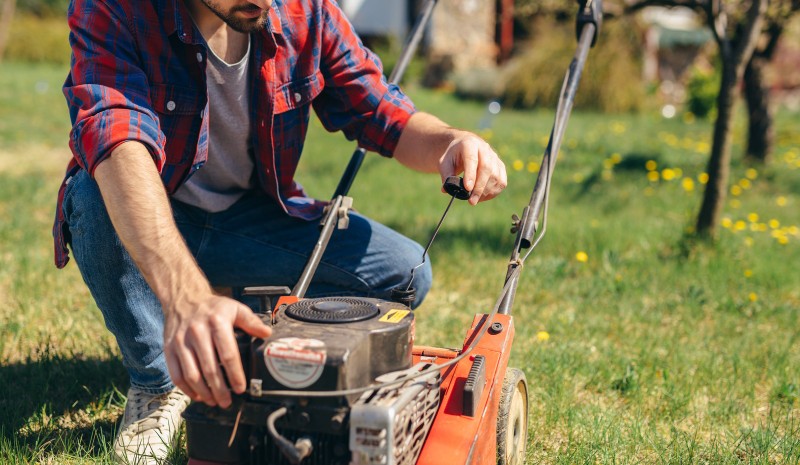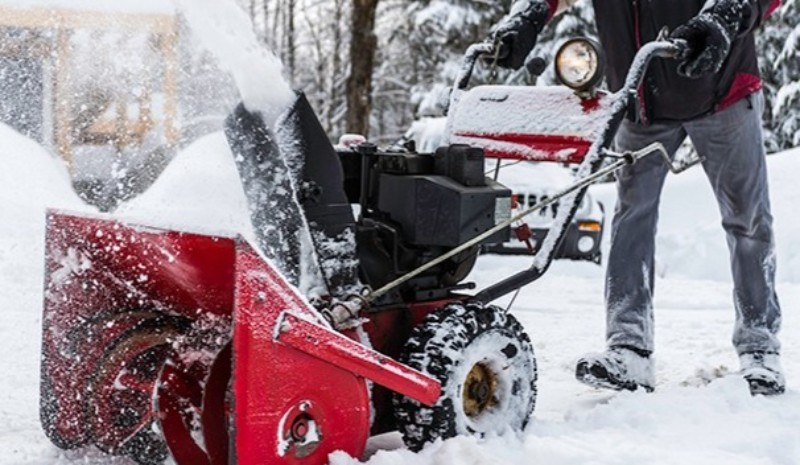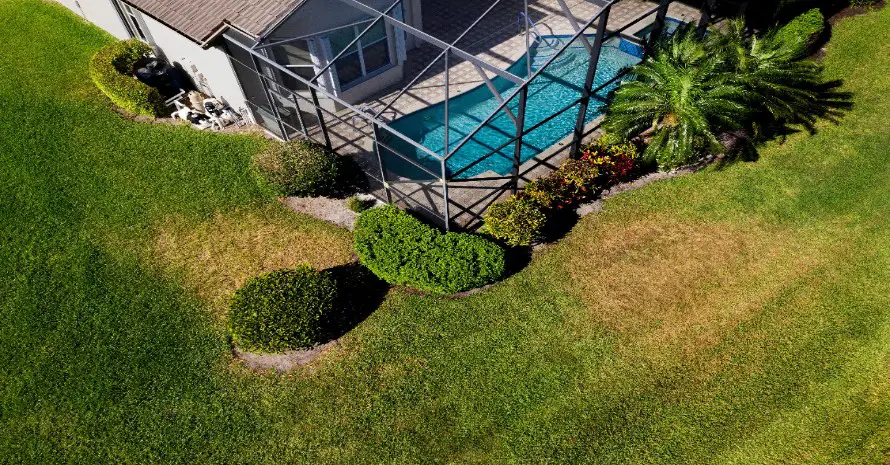Winter is just around the corner, and for those who live in areas with heavy snowfall, having a reliable snow blower is essential. One of the primary concerns for snow blower users is the starting mechanism, as it determines how easily the machine can be turned on and operated in harsh winter conditions. Recoil start is one of the most popular starting options for snow blowers.
However, many people are unaware of how it works and the pros and cons of this mechanism. In this guide to garden tools, we will delve into everything you need to know about recoil start on a snow blower, from its operation to alternative starting options and maintenance tips. So let’s get started and learn more about this essential winter equipment.
How does Recoil Start work on a Snow Blower?
Recoil starting is a manual method of starting an engine that is used on many snow blowers. The way this mechanism works is relatively straightforward. When the user pulls the starter rope, it winds up a spring-loaded mechanism called the recoil starter. As the rope is pulled, the starter engages the flywheel, which rotates and pulls air and fuel into the engine. Once the engine is running, the spring retracts the starter rope back into its housing.
Although it may seem simple, using the recoil start requires some practice and physical strength, as you need to pull the rope fast and hard to start the engine. However, the process can be more comfortable if the snow blower has an ergonomic handle and a well-maintained recoil starter.

Recoil Start Mechanism
The recoil start mechanism is an internal device located at the back of a snow blower engine. Also known as a starting recoil or starter pulley, it consists of a rope, a ratchet, a spring, and a pulley. The rope is attached to the engine, and its free end is wrapped around the pulley. The ratchet prevents the pulley from rotating in the wrong direction, and the spring provides tension to pull the rope back into place after it is pulled to start the engine.
When the user pulls the starter rope, the ratchet rotates the pulley, which turns the engine’s flywheel and starts the ignition. As the engine runs, the flywheel turns, storing kinetic energy to keep it running until the next pull on the starter rope. The rope must be pulled fast and hard enough to generate sufficient power to start the engine. The recoil start mechanism is designed to be compact and durable, making it ideal for use on snow blowers and other small engines. In general, the recoil start mechanism is easy to use, even for those with little experience, as it requires no external power source or wiring.
However, it does require some physical strength to start the engine, which can be challenging for some users. Additionally, the rope on the recoil starter can wear out over time and require replacement, making it important to perform regular maintenance to keep the mechanism in good working order.
If you’re looking for the best gas snow blower for your winter needs, look no further. We have compiled a comprehensive list of top-rated models in our article “Best Gas Snow Blower Reviews & Buyer’s Guide“. Whether you’re dealing with heavy snowfall or simply want to make your snow-clearing tasks easier, this guide will help you make an informed decision.
Process of Recoil Starting
To start the engine using the recoil start mechanism, ensure that the snow blower is on a level surface and that the throttle and choke are set correctly. Then, grab the starter handle and pull the rope out until you feel resistance. Once you reach this point, pull sharply and let the rope recoil back into the starter housing. Repeat this process a few times to prime the engine, allowing fuel to flow and the air to be pushed out of the system.
On the last pull, hold the handle firmly and pull it sharply to start the engine. Sometimes the engine may not start on the first attempt, so it may require a few more tries before it starts. Once the engine is running, let it warm up for a few minutes. After warm-up, disengage the choke gradually, and lower the engine speed to a normal idle.
Take care not to jerk the starter rope too hard, as this could damage the recoil starter or cause injury. With a little practice, using the recoil start can become second nature to you, allowing you to enjoy the convenience of manual engine starting.
Pros and Cons of Recoil Start for Snow Blowers
Using recoil start has its advantages and disadvantages. On the positive side, it is straightforward and affordable, as there are no complicated electronic components involved. Recoil start is also more robust and reliable than other starting options because it does not require a battery, which may fail in cold weather. Recoil start is also lightweight and portable and can be used in remote locations where there is no access to electricity.
On the negative side, recoil start is more physically demanding as it requires the user to pull the starter rope manually, which can be tiring if the engine will not start after several attempts. Additionally, recoil start is not as suitable for large snow blowers or heavy-duty models as it is for small to medium-sized machines. The choice of a starting mechanism depends on the user’s preferences and needs.
Pros
There are several advantages to using recoil start on a snow blower. Here’s a rundown of the primary pros:
- Cost-effective: Snow blowers with recoil starters are generally less expensive than those with electric starters. This is because recoil start is a manual method of starting the engine, which eliminates the need for a complex electrical system.
- Lightweight and compact: Snow blowers with recoil start usually have a simpler design that makes them more lightweight and easy to maneuver.
- Low maintenance: Recoil starters have fewer moving parts than electric starters, which means they are less likely to break down and require repair or replacement.
- Reliable: Recoil starters are not dependent on electrical power, making them a dependable backup option in case of a power outage or dead battery.
- Easy to start in cold weather: Unlike electric starters, which can be affected by extremely low temperatures, recoil starters can usually start the engine even in subzero temperatures.
While electric starters offer more convenience and ease of use, recoil starters have several benefits that make them a preferred option for those who need a reliable and cost-effective snow blower. With proper maintenance and care, a snow blower with recoil start can last for many winters to come.
Cons
Like any other starting mechanism, recoil start on a snow blower also has its drawbacks that need to be considered before making a purchase decision. Some of the cons of using the recoil start are:
- Physical effort required: As mentioned earlier, starting the snow blower using the recoil mechanism requires a significant amount of physical strength, especially in cold weather. If you have a health condition that limits your ability to exert power, you might find it challenging to use this method.
- Possibility of injury: Pulling the starter rope forcefully can cause strain on your arms, back, and shoulders, potentially leading to injuries. If the recoil starter or the rope is damaged, it may cause injury or property damage if it snaps while in use.
- Noisy: Another downside of using the recoil start is that it can be quite loud when pulling the starter rope. If you have neighbors who are sensitive to noise, they might find it disturbing.
- Inconvenient: Recoil starting can be inconvenient, especially if you are not familiar with the mechanism or if it malfunctions. If the engine does not start on the first pull, you will have to keep trying until it does, which can be frustrating.
Despite these cons, using recoil start on a snow blower can be a good option for many people, and with proper maintenance and technique, it can work effectively for years. However, it is essential to understand the limitations of this mechanism and consider other starting options before making a purchase.
If you’re looking for the best corded snow blower for your home, look no further! We’ve compiled a comprehensive list of top-notch corded snow blowers that will make clearing snow a breeze. Whether you’re dealing with light flurries or heavy snowfall, these powerful machines are designed to handle it all.
Check out our article on the “Best Corded Snow Blower for Your Home” to discover the most reliable and efficient options on the market. From their robust motors to their user-friendly features, these snow blowers will ensure you can effortlessly clear your driveway, walkways, and pathways during the winter season.
Alternative Starting Options for Snow Blowers

There are other starting options available for snow blowers, besides recoil start. One of the most popular alternative starting mechanisms is electric start. As its name suggests, electric start uses an electric motor to turn the engine’s flywheel, eliminating the need for manual force. This starting option is particularly useful for those who struggle with physical strength or those who need to start the snow blower in very cold, snowy conditions.
Another alternative is the battery-powered start. Similar to electric start, the battery-powered option allows for remote starting, so you don’t need to be near the machine to turn it on. This type of starting mechanism is prevalent in cordless snow blowers, which are becoming increasingly popular. They also tend to be quieter and easier to maintain than gasoline-powered snow blowers.
Finally, the third alternative starting option is compressed air start. This type of mechanism is usually reserved for larger, more commercial snow blowers and works by using compressed air to turn the engine’s flywheel. This method is highly reliable and ensures that the engine starts quickly and efficiently. When choosing between starting options, it is essential to consider your budget, the size of your snow blower, and your needs.
Each starting mechanism has its pros and cons, and your decision will ultimately depend on your specific requirements. However, it’s worth noting that electric start, battery-powered start, and compressed air start may be more expensive than the traditional recoil start, and they may require additional maintenance.
Maintaining Recoil Start on Snow Blowers
Like any other mechanical component, the recoil starter on a snow blower needs regular maintenance to ensure longevity and reliable operation. The following are some essential maintenance tips for keeping the recoil starter in good condition.
Firstly, checking the starter rope regularly for signs of wear and tear is crucial. Frayed or damaged ropes need to be replaced as soon as possible to prevent further damage to the starter assembly.
Secondly, the recoil mechanism should be kept clean and free of debris. Accumulated dirt and dust can cause the recoil starter to malfunction, so it’s important to clean it periodically. Also, applying lubrication to the recoil starter’s moving parts is beneficial as it ensures smooth operation and prevents rusting.
Lastly, it’s recommended to inspect the recoil starter’s components at least once a year and replace any damaged or worn parts if necessary. With proper maintenance, the recoil start on your snow blower should provide trouble-free operation for several years to come.
Checking the Starter Rope
To ensure your snow blower starts efficiently, it is essential to regularly check the starter rope. The rope is responsible for winding up the recoil mechanism when you pull it, so if it becomes frayed or damaged, it may fail to start the engine. In some cases, the rope may even break or snap during use, leaving you without a method of starting your snow blower. To check the starter rope, you should first detach the spark plug wire to prevent accidental starting.
Then, remove the starter housing cover and carefully pull the rope out of its housing. Look for any visible damage, such as fraying or cuts, and run your hand along the length of the rope to check for any weak spots or knots. If you notice any issues, you should replace the rope with a new one from the manufacturer or a reputable dealer.
Replacing the starter rope may seem like a minor maintenance task, but it can save you time and frustration in the long run and ensure your snow blower is always ready for the next winter storm.
Cleaning and Lubricating the Recoil Mechanism
Cleaning and lubricating your snow blower’s recoil mechanism is crucial for ensuring its smooth operation and longevity. Over time, the starter assembly can become clogged with dirt, debris, and old grease, which can cause the recoil to malfunction or fail altogether. To prevent this, here are the steps to clean and lubricate the recoil mechanism properly:
- Remove the starter assembly cover, typically held on with screws or bolts.
- Inspect the starter rope for any signs of wear or damage and replace it if necessary.
- Clean the starter assembly with compressed air or a soft-bristled brush to remove any dirt, dust, or debris that may have accumulated inside.
- Inspect the recoil spring for any signs of wear, rust, or damage and replace it if necessary.
- Apply a small amount of engine oil or lithium-based grease to the starter rope’s pulley bearing, the starter rope handle, and the recoil spring. Avoid using too much grease, as this can attract dirt and dust and cause the mechanism to malfunction.
- Reassemble the starter assembly, making sure that all the components are correctly aligned and tightened.
By following these steps and maintaining your snow blower’s recoil mechanism, you can ensure that it operates correctly and effectively when you need it the most. Remember to clean and lubricate the recoil mechanism after every winter season or at least once a year to keep it functioning correctly and prolong its lifespan.
If you’re looking for the best single-stage snow blower and need some guidance on how to choose the right one, we have just the resource for you. Check out our comprehensive guide on “Best Single-Stage Snow Blower: How to Choose?” to make an informed decision for your snow-clearing needs.
Tips for Recoil Starting in Cold Weather
Recoil starting can be more challenging in cold weather conditions, as the engine’s oil tends to thicken, making it harder to turn over. However, there are several tips and tricks that you can follow to increase your chances of a successful recoil start during the winter months. Here are some tips for recoil starting in cold weather:
- Use fresh fuel: Old fuel is more likely to evaporate or have water condensation, leading to starting problems. Use fresh fuel with an adequate mix of oil and gasoline.
- Keep the battery charged: If your snow blower has an electric starter, make sure the battery is charged fully and well insulated during cold weather.
- Warm up the engine: Before starting the snow blower, let the engine warm up for a few minutes in the air without a load. This warming up period will help ensure the oil can lubricate the engine properly.
- Prime the engine: To help the engine fire more quickly, prime the carburetor by pressing the primer bulb several times. – Position the choke: Adjust the choke to the highest setting to get more fuel to the engine.
- Use the proper starting technique: When pulling the starter rope, mount a firm foot hold and pull the rope quickly and smoothly without attempting to yank it. You may need to repeat this multiple times to start the engine successfully.
By following these tips, you can increase your chances of successfully recoil starting your snow blower in cold weather conditions. It is essential to practice safe handling when operating garden tools, including snow blowers, to prevent accidents and injuries.
Conclusion
In conclusion, recoil start is a widely used starting mechanism for snow blowers that is relatively easy to operate and maintain. While it may not be the most convenient option, especially for those who prefer not to exert too much physical effort, it can still be a reliable starting mechanism for smaller snow blower models. However, it’s essential to remember that recoil starters require regular maintenance to ensure they function correctly. Regular cleaning, lubrication, and inspection of the starter rope can prolong the lifespan of the recoil starter and snow blower in general.
Additionally, snow blower users should be aware of the cold weather conditions and take measures to warm up the engine and fuel before attempting to start the snow blower. Overall, the choice of starting mechanism for a snow blower will ultimately depend on personal preference and the specific needs of the user. Regardless of the starting mechanism, it’s essential to consider safety measures when operating a snow blower and follow the manufacturer’s instructions thoroughly to prevent accidents and ensure optimal performance.
Frequently Asked Questions
1. Can I use recoil start on a snow blower that has an electric starter?
Yes, many snow blowers come with both electric and recoil start options. Recoil start is typically used as a backup option in case the electric starter fails or if the battery is dead.
2. How can I make pulling the starter rope more comfortable?
Using an ergonomic handle and maintaining the recoil starter can make pulling the starter rope more comfortable and efficient.
3. Is it possible to start a snow blower without a starter rope?
No, a starter rope is a necessary component of the recoil start mechanism, and without it, the snow blower cannot be started manually.
4. Can recoil starting damage the engine of a snow blower?
Recoil starting, if done correctly, should not damage the engine of a snow blower. However, frequent and excessive use of this method can cause wear and tear on the recoil starter mechanism.
5. Why do some snow blowers have larger starter ropes than others?
Larger starter ropes are designed to generate more power and make the starting process more manageable, especially in freezing temperatures.
6. Can I start a snow blower with recoil start if the starter rope is wet?
Starting a snow blower with a wet starter rope can be challenging, as it may be more slippery and harder to grip. It’s best to dry the rope before attempting to use it.
7. How often should I lubricate the recoil starter mechanism?
It’s recommended to lubricate the recoil starter mechanism every 25-30 hours of use or once per season. Check the manufacturer’s guidelines for specific recommendations.
8. What are some common problems with recoil start on snow blowers?
Common issues with recoil start can include a stuck or broken starter rope, a faulty or worn recoil starter, or a damaged flywheel key. Only a qualified technician should fix these problems.
9. Can I convert a snow blower from recoil start to electric start?
It is possible in some cases to convert a snow blower from recoil to electric start, but it depends on the make and model of the machine. Check with the manufacturer or a qualified technician for advice on this matter.
10. How long does the recoil starter typically last?
With proper maintenance and normal use, a recoil starter can last for several years. However, it’s recommended to replace the starter rope every season to prevent wear and tear on the mechanism.




